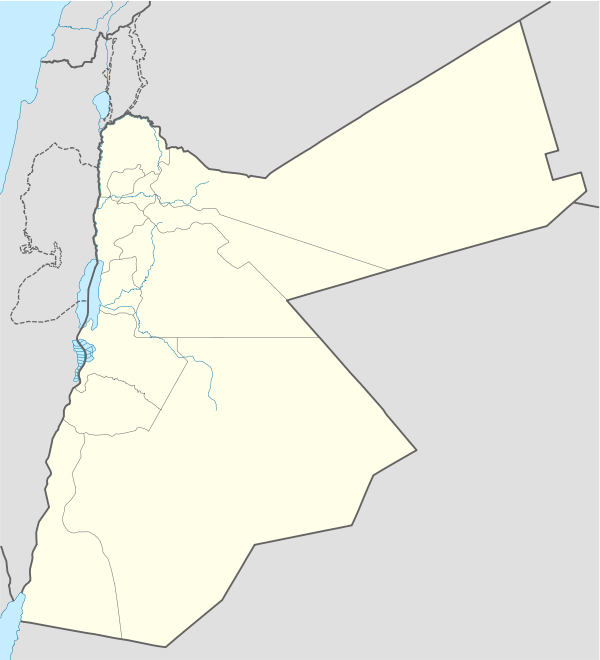Sela (Edom)
Sela (Hebrew: סֶּלַע, transliteration Sela‛, meaning rock; Arabic: السلع, es-Sela‛; Greek: πέτρα, 'Sela'; Latin: petra) [1] is a geographical name encountered several times in the Hebrew Bible.[2] Since, when used with article, it simply translates to "the rock", it is unreasonable to connect it to just one location.[2] A site by this name is placed by the Second Book of Kings in Edom.[2]
Es-Sela' السلع | |
|---|---|
Sela | |
 Es-Sela' | |
| Coordinates: 30°46′17″N 35°34′59″E | |
| Country | Jordan |
| Province | Tafilah Governorate |
| Department | Busaira Department |
| Time zone | GMT +2 |
| • Summer (DST) | +3 |
Hebrew Bible
Book of Judges
In the Book of Judges there is a mention of a place called Sela, "the rock", on the southern border of the lands still inhabited by the Amorites after the partial conquest of Canaan by the Israelites (Judges 1:36).
Second Book of Kings
2 Kings sets "Sela" in the great valley extending from the Dead Sea to the Red Sea (2 Kings 14:7). It was near Mount Hor, close by the desert of Zin.[1]
In the story of King Amaziah of Judah, a place called Sela is mentioned. Amaziah is described as throwing 10,000 Edomites to their death from the heights of Sela (2 Chronicles 25:12; 2 Kings 14:7).[3] When Amaziah took Sela he called it Joktheel (also spelled Jokteel (JPS) and Jectehel (DRB)) (q.v.) (Hebrew: יָקְתְאֵל, Yoqtĕ-’Ēl, "the blessedness of God" or "subdued by God";[1] Latin: Jectehel) or Kathoel (Greek: Καθοηλ) in the Septuagint.
Isaiah and Obadiah
Places called Sela are mentioned by the prophets Isaiah and Obadiah (15:1; 16:1; Obadiah 1:3) as doomed to destruction.
Archaeological site
Sela in Edom is widely identified with the ruins of Sela, east of Tafileh (identified as biblical Tophel) and near Bozrah, both Edomite cities in the mountains of Edom, in modern-day Jordan.
As of 2012 Sela, or es-Sela in Arabic, had not yet been excavated, but surveys of the plateau have produced surface finds from the Early Bronze Age through to the Nabataean period, but mainly from the time of the Edomites of the Hebrew Bible: the early to mid-first millennium BCE.[3] This is the period when Sela was most extensively inhabited.[3]
Confusion with Petra
Sela appears in later history and in the Vulgate under the name of 'Petra', the Greek translation of the Semitic word 'Sela', meaning 'rock'. This led to Sela being confused with the Nabataean city of Rekem,[4] known to the Hellenistic world as Petra.
References
- This article incorporates text from a publication now in the public domain: Easton, Matthew George (1897). "Sela". Easton's Bible Dictionary (New and revised ed.). T. Nelson and Sons. pp. 611–612.
- Meanings from Net Bible Study Dictionary, https://netbible.org/#!search/Joktheel
- "Sela". Bible Hub. Retrieved 3 December 2019.
- Corbett, Glenn J. (December 2012). "The Edomite Stronghold of Sela: Is this where 10,000 Edomites were thrown to their deaths?". Bible History Daily. Biblical Archaeology Society.
- Josephus (1930). Jewish Antiquities. doi:10.4159/DLCL.josephus-jewish_antiquities.1930 – via Loeb Classical Library.
| Look up Sela in Wiktionary, the free dictionary. |